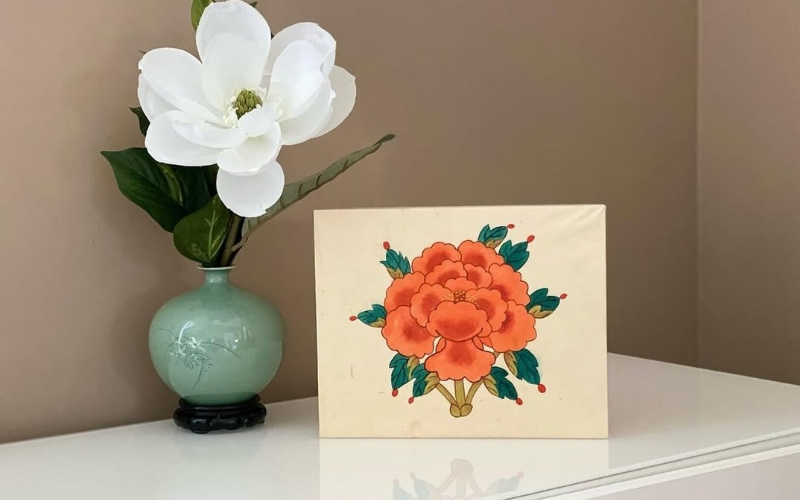
Kate Nam, a renowned Minhwa artist based in the San Francisco Bay Area, is dedicated to sharing the beauty and significance of Korean heritage paintings with the world. A passionate advocate for Korean culture, she has actively curated and hosted numerous Minhwa exhibitions in major cities like New York and San Francisco. Through engaging workshops and lectures, she has also inspired countless individuals in the Bay Area to explore the rich history and techniques of this traditional art form.
Kate Nam's artistic practice bridges the gap between tradition and modernity. While deeply rooted in the vibrant colors and aesthetic sensibilities of classical Korean paintings, her artworks often depict contemporary themes and lifestyles. This unique approach allows her to infuse traditional techniques with modern interpretations, creating a dialogue between past and present.
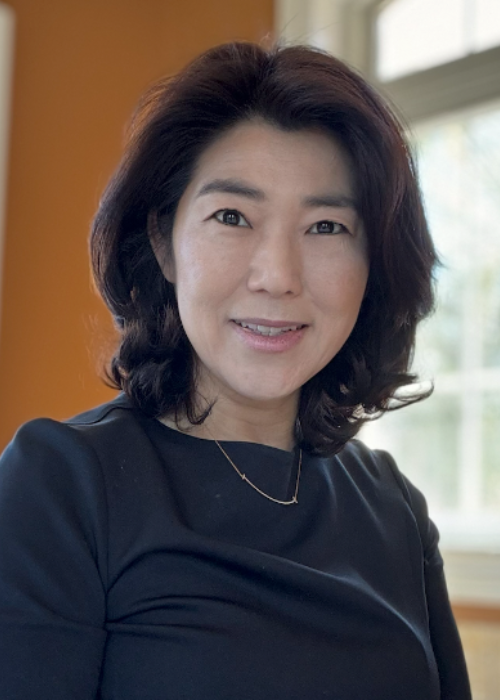
In an email interview conducted on January 20th, Ms. Kate Nam elucidated the profound significance of minhwa paintings within the context of Seollal, the Korean Lunar New Year.
Could you please tell us a little bit about yourself and your journey as a minhwa artist?
I am Kate Nam, a Minhwa artist and an advocate of promoting Korean culture, living in San Francisco Bay area California. Over the past decade, I have curated and hosted several Minhwa exhibitions in New York and San Francisco, as well as conducted Minhwa workshops and lectures in the San Francisco Bay Area.
What initially drew you to the world of minhwa, and what aspects of this traditional art form resonate with you most deeply?
It was in 2009 when I first learned about Minhwa. At the time, I was an executive, a field in which I had spent over a decade, primarily with European design companies. During that period, world-class brands frequently collaborated with Japanese designers across various product categories, but there were no partnerships with Korean designers or artists.
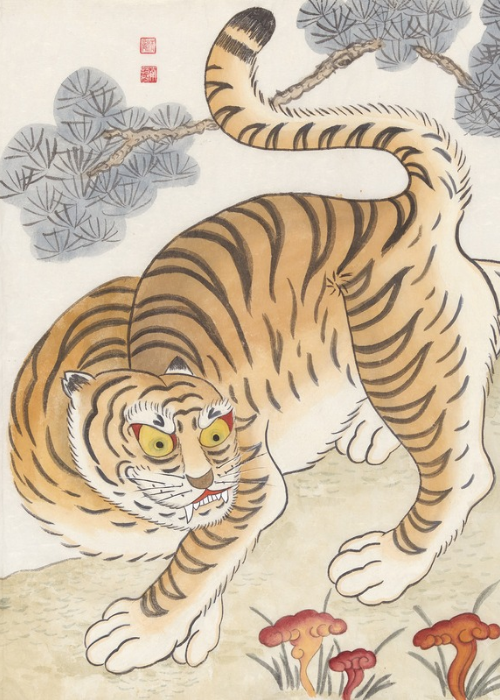
As I practiced and learned more about Minhwa, I discovered it is not just an art form but also an innovative social trend with practical applications to products and daily life. Its charm and versatility deeply resonated with me, fostering a strong passion for promoting Minhwa in the United States.
What is minhwa? How does your modern perspective influence your approach to this ancient art form?
“Minhwa” is translated as “People’s painting” which is Korean folk painting. From the 15th to 19th centuries, Korea was under the Chosun dynasty, a society with strict social classes. Art and paintings were luxuries only available to the royal family and nobility, while ordinary people had no access to them. In the 19th century, as society changed, some common people became wealthy and started buying art made by itinerant or unknown artists—marking the birth of Minhwa. This was the start of Minhwa. To me, Minhwa represents a movement that brought art into everyday life and homes, making it more accessible to everyone. It continues to hold relevance and can still be applied to our modern society in the 21st century.
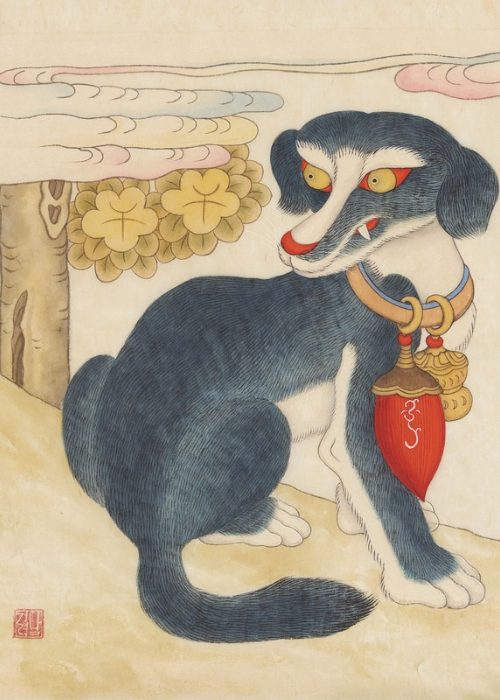
Could you explain the cultural significance of minhwa in Korean society, particularly during Lunar New Year? What is the significance of minhwa during the Lunar New Year celebrations in Korea?
When Minhwa emerged in the 19th and early 20th centuries, its primary purpose was for interior decoration and ceremonial events, such as weddings and funerals. Additionally, one of the most popular uses of Minhwa during that time was as guardian paintings placed at the gate or entrance of homes in the New year. These paintings were believed to bring good luck and ward off evil spirits, particularly during the New Year. The specific purpose of Minhwa is called “Sehwa.”
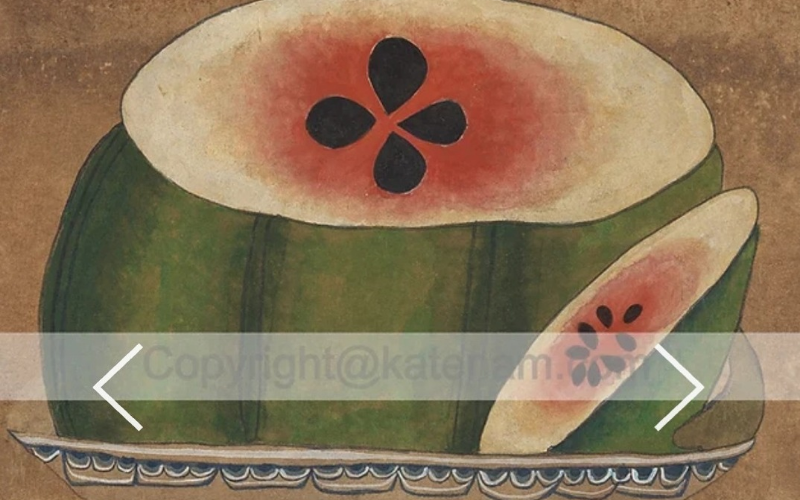
Can you discuss the specific sewha ( meaning ) associated with some of the common motifs found in your work, such as flowers, birds, and mythical creatures?
Nowadays, Minhwa artists commonly use two types of motifs for Sehwa. One includes traditional images meant to scare away evil spirits, such as tigers, dogs, roosters, and the fierce face of a general. The other type features symbols that bring good luck, such as peonies, peaches, carp (fish), and bats. These motifs are deeply connected to Sehwa, as they reflect the desire to protect the home and invite prosperity.
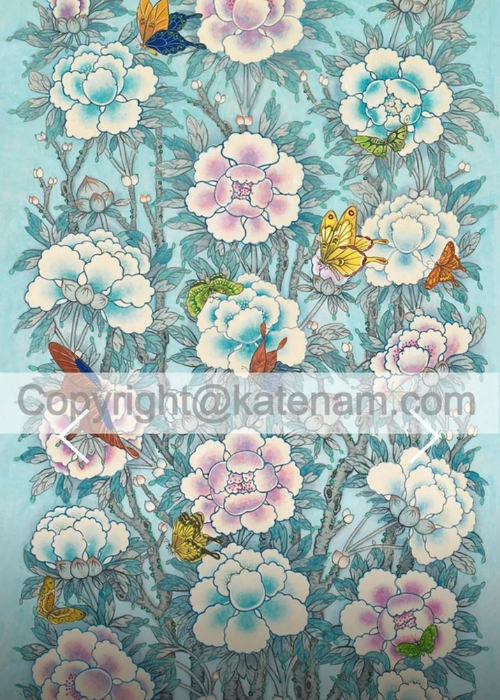
What are the traditional materials and techniques used in creating minhwa, and how do you incorporate them into your own practice?
Traditional materials used in Minhwa include rice paper, powdered color pigments, and a special glue made from animal bones. The technique of Barim (gradation) is often employed to create a 3D effect in the painting. Today, however, these materials have expanded to include a variety of others, such as tube colors similar to watercolor. In my practice, I use both traditional materials and contemporary ones. Additionally, I’ve experimented with transforming Minhwa into digital formats, blending tradition with innovation.
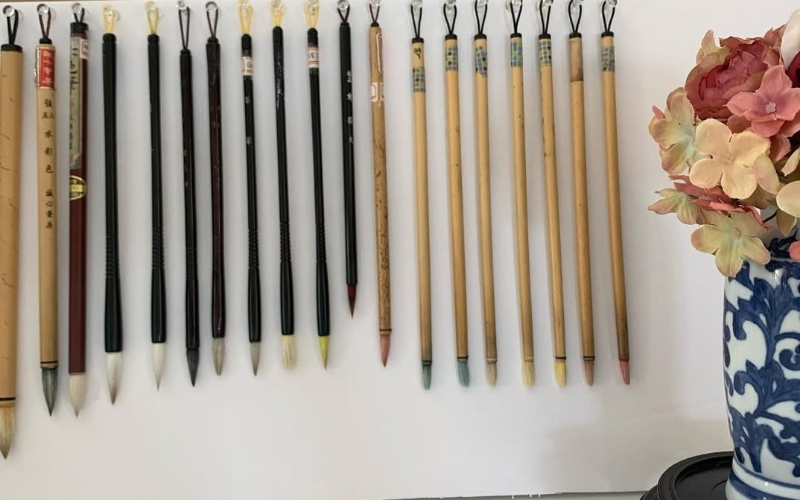
Can you describe your creative process, from initial inspiration to the final stages of creating a minhwa painting?
Minhwa paintings carry messages of happiness, good luck, marriage, promotion, and longevity. In my creative process, I aim to reflect contemporary lifestyles while preserving these traditional motifs. I incorporate the same wishful messages from Minhwa, but adapt them to resonate with modern themes and sensibilities. For example, I painted a spring/Easter-themed piece featuring daffodils, mushrooms, rabbits, and eggs, with the message of health and prosperity for the Spring season. This allows me to honor the tradition while making the work relevant to today's world.
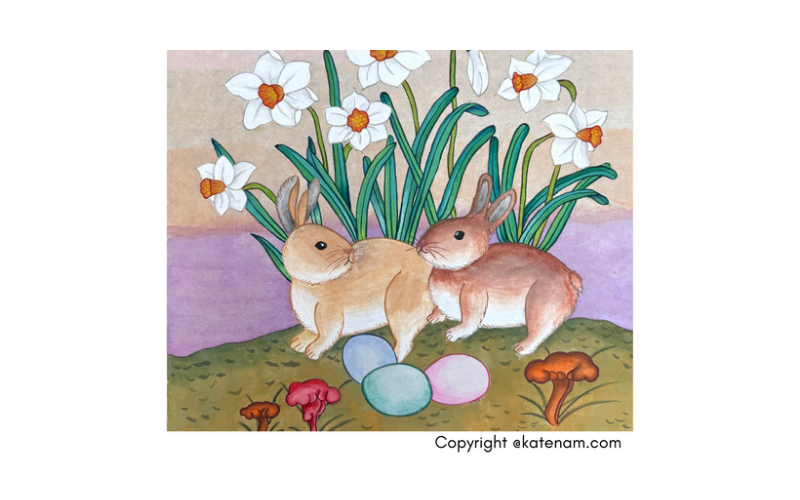
What message or sentiment do you hope to convey through your minhwa creations during this time of celebration and renewal?
There have been many challenges and social issues recently. From natural disasters to wars, the world has experienced numerous conflicts and unfortunate circumstances. During the New Year celebration, I hope to convey a message of “Harmony” through Minhwa, bringing peace and balance into everyone’s daily lives.
What are your future plans?
I am very passionate about digital and multimedia integration with Minhwa.I believe this multiple dimensions of the art creation to Minhwa could carry messages that more easily resonate with western culture. Most recently, I have initiated the “Minhwa Meets Multimedia” challenge that’s open to all artists. If anyone is interested in learning more, they could visit www.kbean.com/challenge
How about this article?
- Like6
- Support0
- Amazing1
- Sad0
- Curious0
- Insightful0


